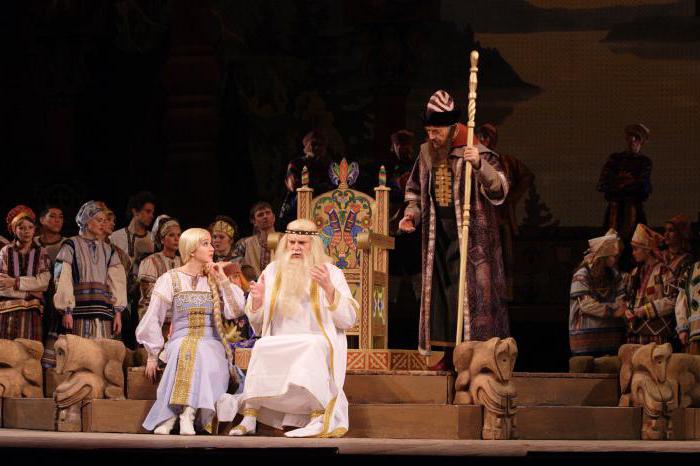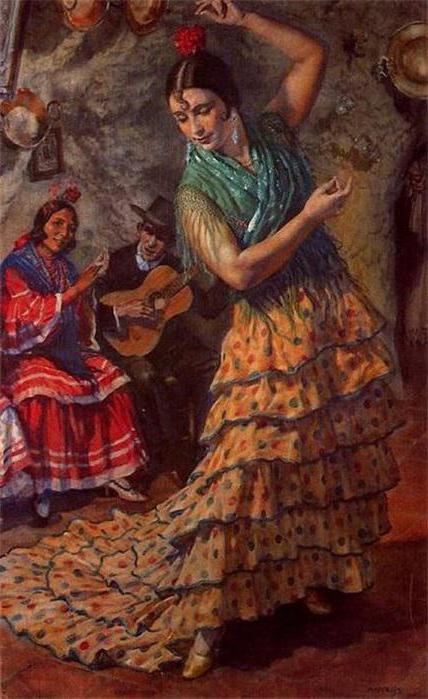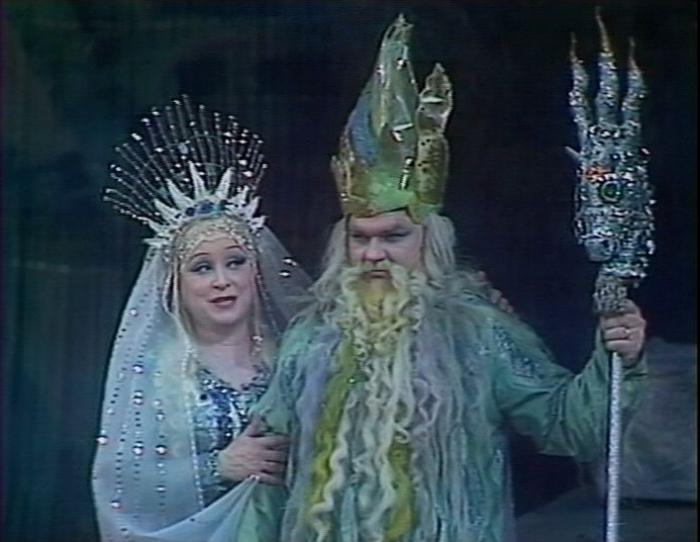Nikolai Andreevich Rimsky-Korsakov (1844-1908) - a great Russian composer, naval officer, teacher, an active member of The Mighty Handful, whose ideological inspirer was V.V. Stasov. The principles followed by composers who took Russian folklore as a model, N. A. Rimsky-Korsakov later transferred to his teaching classes at the St. Petersburg Conservatory.
Creativity Overview
Nikolai Andreevich wrote, as he himself believed, a lot. Indeed, these are fifteen operas, three symphonies and other symphonic forms (suites, cantatas, concerts, capriccios, overtures), vocal compositions. Such is the summary of his list of works. Rimsky-Korsakov in the later years of his life sadly said that it would be a shame if they forgot it. But no, his works are loved and demanded by the audience.
Childhood and youth
Nikolai Andreevich was born into a nobleman's family in the county town of Tikhvin. His older brother (the age difference was enormous - 22 years old) was a naval officer, and little Kolya dreamed of sea voyages, and for now, from the age of six, he received home education. He played the piano little by little and even composed, but the sea attracted him. The father supported this dream and at the age of 12 he gave his son to the Naval Cadet Corps in St. Petersburg. Here he met with Italian and German operas, and music began to attract him irresistibly. At age 15, he began to seriously study the piano. His teacher introduced the gifted young man to members of the Mighty Handful circle in 1859.
First work
Then, under the guidance of M. A. Balakirev, Nikolai Alexandrovich began to work on the First Symphony, which opens his list of works. Rimsky-Korsakov began to compose it seriously in 1861-1862. He wrote the first part, the scherzo and the finale. Orchestrated very poorly, because there was no longer time for music lessons. Rimsky-Korsakov graduated from the Marine Corps and went to sea.

He was still trying to write andante, but put off his work for three years, regularly performing service on the Almaz clipper. Over the years, he saw half the world, and marine impressions later appear in orchestral works. When Nikolai Alexandrovich returned in 1865, he completed work on his symphony, purely Russian in spirit, filled with themes of folk songs. Andante stands out with the song “Tatar Full”. Its first edition was performed under the direction of Miliya Aleksandrovich Balakirev. In 1884, Rimsky-Korsakov returned to work on it. Symphony 1 was re-orchestrated. In such a modified form it is performed today.
New composer paints
The national flavor in music, which all the members of The Mighty Handfuls loved so much, was reflected in the Overture on Three Russian Themes created in 1866, in 1867 in the Serbian Fantasy and in the musical painting Sadko. This picture is a stage in the life of a young composer. Here he will find what will later be called the “Rimsky-Korsakov scale”, which magnificently reflected the elements of the sea and the fantastic underwater world with orchestral colors. The theme "Sadko" will later be present in the opera of the same name.
Attraction to a fairy tale
The tale was continued in the symphonic suite “Antar”, in which the complication of melodies and rhythms by trioli was used. This creates the desired oriental sound for the author. The composer returned twice to work on an oriental tale until he achieved the desired result.
Marriage
In the years 1871-1872, twenty-four-year-old Nikolai Alexandrovich worked on his first opera Pskovityanka, which consists of three acts and six paintings. A young girl Nadezhda Nikolaevna Purgold, an experienced pianist and a beginner composer, helps him a lot in this work.
The inevitable happens. Young people fell in love with each other. They will carry this feeling through their whole lives, having sealed it in 1872 with a wedding. The year 1873 was marked by the staging of the drama Pskovityanka on the stage of the Mariinsky Theater under the direction of E. Napravnik and the birth of his son Mikhail.
Transformation of the first opera
But this was not the final version of the historical drama written by Rimsky-Korsakov. Pskovityanka has three scores. Work on it lasted about twenty-five years. Initially, all the members of The Mighty Handful influenced the young author, especially M. Mussorgsky, who was writing his Godunov at that time. The themes and motives, cleared of everyday elements, were reflected in each composer in the form of a struggle between good and evil, personal and state.
The narration in the opera is restrained, epic. The author deliberately abandoned the abundance of arias and ensembles, approaching recitative. Opera has been staged repeatedly in Russia, and in Italy, and in Spain, and in Belgium. In Paris, she was a huge success in the Russian seasons of Diaghilev.
All seventies are devoted to active pedagogical activity and self-education.
The heyday of creativity
The creative upsurge of the composer leads to the fact that his list of works is replenished. Rimsky-Korsakov in 1880 creates the opera May Night, which was staged at the Mariinsky Theater under the direction of E. Napravnik. This work was written at the proposal of his then bride. Rimsky-Korsakov dedicated his work to her. The May Night opera presents the listener with lyrical, comedic, and fantastic scenes. It is based on folk songwriting.
In the spring of 1880, talking with A.N. Ostrovsky and having received permission to make changes in the libretto of the opera Snegurochka, Rimsky-Korsakov sets to work. She goes easy. All nature in the Stelevo estate inspires him. Even the echo seemed to him the voice of a goblin or other forest monsters. Rimsky-Korsakov devoted much attention to the predominance of sounds in a musical work , in height close to the range of a musical instrument or vocal. And a poetic miracle happened, to which A. Ostrovsky himself was the first to be enthusiastic. Rimsky-Korsakov’s opera “The Snow Maiden” is imbued with freshness, simplicity and purity of folk songs, hymns of worship in spring. The orchestra introduction to the prologue describes the spring awakening of nature. One of Snegurochka’s first arias is light and graceful (“... walk along the berries”), her arietta “I heard, heard” is lyrically penetrating. The scene “Seeing Shrovetide” contains folk song choral episodes. The first act begins with Lely’s slow and viscous song, then with a cheerful dance song and continues with Snegurochka’s gentle, sad arietta “It Hurts Here”, Kupava’s enthusiastic, impetuous story “Snegurochka, I am happy”. In the second act, the main place is occupied by the ceremonial epic grandeur of Berendey "Hello to you, the wise."

The dreamy, poetic Cavatina of Berendey pours calmly. The third act opens with a merry dance "Ay, in the field of lyponyka." The symphonic episode “Dance of buffoons” is replete with the brightness of orchestral colors, breathtaking rhythms. It’s wide, the melody from Lel’s third song “The cloud conspired with thunder” is free. In the fourth act, the lyrical feelings of the Snow Maiden increase. In the scene of the heroine's melting, her image is fragile and tender. Rimsky-Korsakov’s opera The Snow Maiden ends with a magnificent radiant choir.
Virtuoso violin piece
In 1887, A.P. Borodin died unexpectedly for everyone. His "Prince Igor" was not finished. Glazunov and Rimsky-Korsakov took up the enormous work of analyzing manuscripts and completing work on the opera. In the summer they worked in the country, but for Nikolai Andreevich, work was interrupted. A thought occurred to him that did not leave him: to compose a virtuoso violin fantasy on a Spanish theme. The composer's Spanish capriccio is a suite that consists of 5 parts. They walk without interruption and paint pictures of the life and nature of Spain, its holidays and national characters.

Capriccio - composition for an orchestra with a change of tones and a careful selection of melodic drawings. The first part - “Alborada” - is based on an Asturian melody and welcomes the rising morning sun. After a pause, there are “Variations” of the second part. They are based on an evening dance that ended the day in Asturias. The melody has a pastoral character, but then begins to sound powerfully, pathetically and gradually calms down. The third part returns the listener to the first topic - “Alborada”. But the sound is now brighter and more powerful. The fourth part is a passionate Andalusian dance song. Fanfare and drums open it, then the violin, flute, clarinet and harp alternately solo. Everything ends with a temperamental gypsy dance. The final fifth part - “Asturian fandago” - is performed by the whole composition of the orchestra, but trombones are immediately heard in it. This is a magnificent and fast-paced dance that strikes with power and greatness. The author returns to the topic from the third part, and the code repeats the beginning - a very fast, violent alborada sounds.
Great storyteller
Since 1895, the composer's thoughts have constantly turned to fabulous and dramatic themes. He begins their embodiment with a charming fairy-tale by Gogol about the blacksmith Vakul and the capricious beauty Oksana. This is how the "Night before Christmas" appears. The opera was conceived as a fantastic fairy tale, in which Nikolai Andreevich included many recycled carols. They reinforce the elements that convey the true life of the Little Russian village. Overture to the first act immediately immerses the listener in a frosty Ukrainian night. The mood in which the four acts are imbued varies with the characters. Bright are the gracious Devil and Solokha, the colorful admirers of Solokha - Chub, Head and Clerk. The sorcerer Patsyuk is terrible. In the fourth act, everyday scenes that have a comic connotation are interspersed with lyric ones. And in the finale the chorus “In memory of Gogol” sounds powerful.
Novgorod epic
After finishing work, Nikolai Andreevich immediately in the same 1895 was taken for the next work. Now he is completely immersed in the world of northern epics. Fantastic with everyday elements the epic of the Russian people was reflected in the next opera. A new scale has already formed in my head, which will give it a fabulous and exotic sound. The opera Sadko begins to be written with inspiration. Rimsky-Korsakov refused to divide it into actions and intervals, composing it from seven paintings. The composer tried to create an epic work with a smooth course of action, which was supposed to recall the spirit of folk epic tales. It begins with the magnificent introduction of the orchestra, which gives a picture of the Sea-Ocean. The first picture is a large choral scene, which the buffoons end with their dances. The second picture takes place on the shores of Lake Ilmen, where Sadko and Tsarevna Volkhova say goodbye. Their love duet takes place against the backdrop of echoes of a round dance song of the inhabitants of the underwater kingdom. The third picture shows the suffering of an abandoned Lyubava. Her recitative and aria are filled with deep sadness. In the fourth picture, a wide action takes place on the pier. The choir prepares the appearance of Sadko, as well as the Varangian guest with his courageous song, the Indian and Vedenets guests. And finally, Sadko sings a wide and long Russian song, which everyone picks up. The fourth picture ends with universal glee. The fifth and sixth paintings by musical means draw the sea-ocean.

Sadko sings a bright, great song, "The Blue Sea is formidable, wide." He takes up the harp and everyone starts to dance in a wild dance. Because of this, a storm rose at sea, and ships began to sink. The elder-hero knocks out the harp from Sadko, and sends him and Princess Volkhov to Novgorod. The final picture represents the tender parting of Volkhov, which should turn into a river, with Sadko, and his meeting with his wife Lyubava. Sounds of their joyful duet. A powerful choir completes the opera. Everyone sings the glory of Sadko,
the Volkhov River and the blue sea-ocean. "Sadko" is included in his most performed list of works. Rimsky-Korsakov from the time of M. Glinka most fully expressed the Russian folk style in it. And what most distinguishes this opera from the whole series written by Nikolai Andreyevich is the epic recitative.
Vocal compositions
Nikolai Andreevich Rimsky-Korsakov repeatedly created choral compositions and romances in his creative life. There are about eighty of them written. But now we will pay attention to the chamber work - an oriental romance (“Having been captivated by a rose, a nightingale”), created to the words of A. Koltsov. He refers to the first experiments of the composer in this field.
This is a languid elegiac work. His melody is fresh, and his form is free. It seems to have an element of improvisation. The piano part defined its character, and the vocal part requires expressiveness in pronouncing the text. In later works, vocals become the basis, followed whimsically by piano accompaniment.
Conclusion
N. A. Rimsky-Korsakov left a huge legacy. But his personality was most fully revealed in operas. They show his passionate love for the features of the national Russian character, for the history and life of the people, for his poetic ideas and customs. The legendary drama “The Legend of the Invisible City of Kitezh and the Maiden Fevronia”, which tells about the events of the Tatar invasion, and the fairy tale satire “The Golden Cockerel”, which he responded to the revolutionary events of 1905, belong to the last period of his work.
The composer died in 1908 and was buried in St. Petersburg.